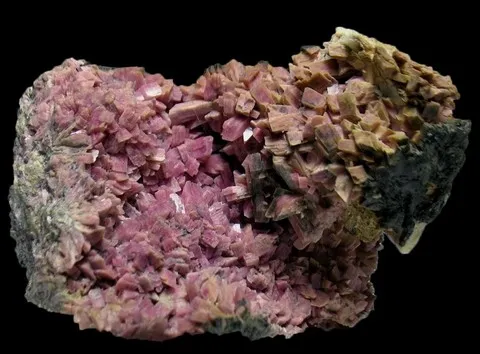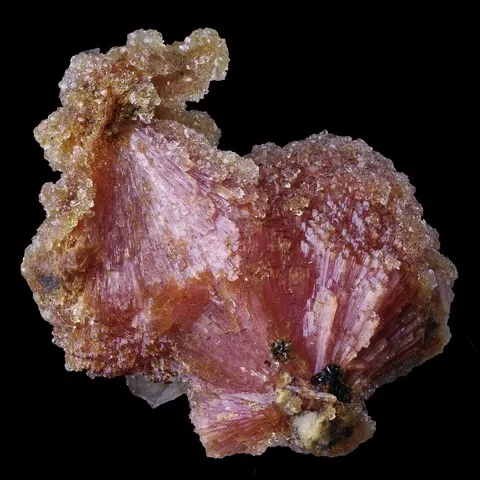INESITE
Class : Silicates
Subclass : Inosilicates
Crystal system : Triclinic
Chemistry : Ca2Mn7Si10O28(OH)2 . 5H2O
Rarity : Rare
Inesite is a rare pyroxenoid found in metamorphic manganese deposits. Its name comes from the ancient Greek "ines" (meat fibers) because of its color and appearance. It is generally found in lamellar crystals that form fibrous spherules and rarely in prismatic or acicular crystals. Color usually varies from pink to red. Exposed to light, it turns brown due to the emergence of a manganese oxide film. It is a mineral that is not used in any specific industry, specimens are intended only to the mineral collection. However, it should be noted that there are inesite cabochons, potentially this mineral can be cut and used in jewelery, but has no real interest.
Main photo : Inesite from Daye mining area, Edong, Daye, Huangshi Prefecture, Hubei Province, China
Inesite in the World

Inesite in France
Inesite does not occur in France.
Twinning
Inesite has no twinned crystals known.
Fakes and scams
No scam known for this mineral.
Hardness : 5,5 à 6
Density : 3,03
Fracture : Irregular
Trace : White
TP : Translucent to transparent
RI : 1,609 to 1,644
Birefringence : 0,035
Optical character : Biaxial -
Pleochroism : Very weak
Fluorescence : None
Solubility : All acids
Magnetism : None
Radioactivity : None

